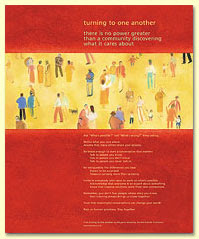During the last half of 2009, the Corporation for National and Community Service advertised on its website that the Social Innovation Fund grant application, or NOFA, would be posted in mid-December. They have finally posted a draft NOFA but are first seeking feedback from the foundation field on three aspects of the draft: How they should define "low-income communities", how they should assess the intermediary foundations, and how they should assess the subgrantee nonprofits.
While the Corporation initially stated that grants to intermediary foundations, such as community foundations like ours, would be between $1 million and $10 million, they have now increased the minimum grant level to $5 million. Because an SIF grant award requires a dollar for dollar match by the intermediary foundation, this increase in the minimum grant level to $5 million creates an insurmountable barrier for many of us. In my comments to the draft NOFA, I will be asking the Corporation to consider reducing the minimum grant level back down to $1 million, thereby enabling community foundations like ours to apply.
If you are even remotely interested in applying for an SIF grant, please lend your voice to the dialogue and take some time to provide feedback to the Corporation on these issues. It is not too late to influence their decisions on many things, including the minimum grant levels. Comments are due January 15, 2010.
YEAR EIGHT REPORT ON AVI CHAI NOW AVAILABLE
-
YEAR EIGHT REPORT ON AVI CHAI NOW AVAILABLE
December 31, 2019
Joel Fleishman
2019
Download Report
Today, Joel Fleishman’s final report on the spend-down...
5 years ago



